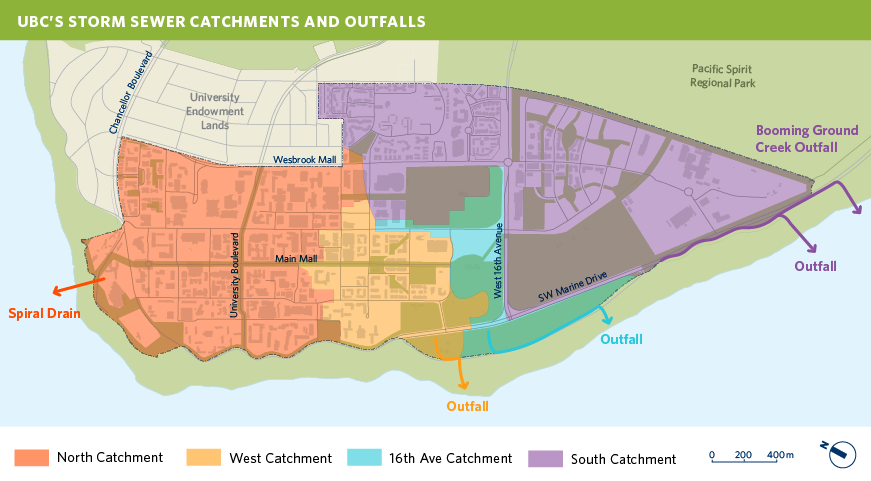Given Vancouver’s rainy climate, stormwater is an abundant resource to manage at UBC. For example, in 2012, 1,127 mm of rain fell on campus—enough water to cover the entire 1,000 acre campus in 1.1 metres of water.
UBC’s Energy and Water Services (EWS) unit is responsible for the management and maintenance of all campus stormwater mains. This includes the implementation of the UBC Integrated Stormwater Management Plan (ISMP) currently underway.
Managing Stormwater at UBC
Stormwater at UBC is managed at a campus-wide scale and at an individual site level. The stormwater solutions at the individual site level are tailored to the natural and built environment of each site and may include drains, stormwater channels, and rain gardens.
At a campus-wide scale, we collect stormwater within four large catchments: North Campus, West Side, 16th Avenue and South Campus. Each catchment has a distinct drainage path, which leads to different outfalls that drain directly into the ocean.
UBC Catchments
- North Campus catchment flows are collected and conveyed to the spiral drain shaft at Cecil Green Park House, which redirects stormwater directly into the ocean.
- Stormwater flows in the West Side catchment are collected and conveyed to the ravines at the Trail 7 outfall.
- The 16th Avenue catchment flows are collected and conveyed to the ravines west of the UBC Botanical Gardens.
- The stormwater flows in the South Campus catchment are collected and conveyed through ditches along Marine Drive to a culvert that crosses Marine Drive and discharges to the Booming Ground Creek outfall.
Campus stormwater drains by gravity directly to all the outfalls located on campus. Stormwater detention facilities are located at the South Campus pond and at the underground tanks beneath Nobel Park. The stormwater drainage and sanitary drainage systems on campus are completely separate from one another.
